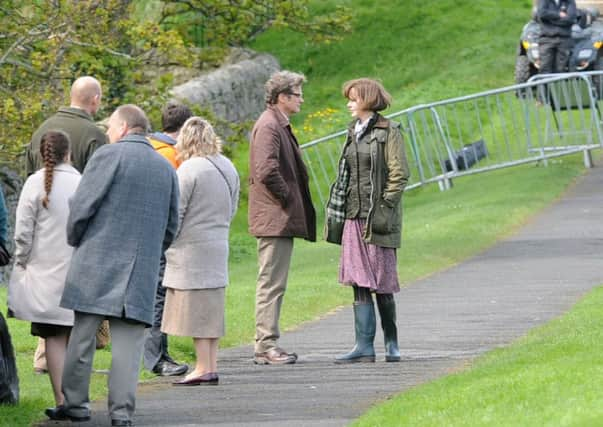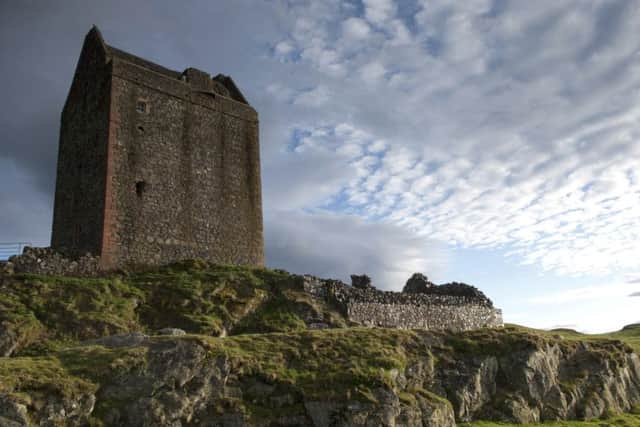Great writers have been inspired by our unique area


It’s an interesting question as we look forward to next month’s Berwick Literary Festival.
As a schoolboy I was obtuse – I’d only read what I wanted, and that didn’t include novels, poetry or even biography.


Advertisement
Hide AdAdvertisement
Hide AdThen, inexplicably, in my last year at school, I started reading Cervantes’ classic, Don Quixote: I couldn’t put it down.
Encouraged, my mother said: “Marvellous, but don’t read Thomas Hardy – he’s depressing, nor Walter Scott, he’s long-winded and wordy.”
The next day I bought The Mayor of Casterbridge and Guy Mannering. Teenagers have a reputation for being curmudgeonly.
Guy Mannering, along with other Scott novels, is set in the Borders: in this case it’s Cumbria and Galloway.


Advertisement
Hide AdAdvertisement
Hide AdBut Rob Roy starts in Northumberland, and The Bride of Lammermoor in the eastern marches, just north of Berwick. Later, Donizetti used the story as the base for his opera Lucia di Lammermoor.
Scott was an incurable historical romantic and was writing at the high watermark of the Romantic movement. He loved the Borders.
Another great Borders’ writer Nigel Tranter takes up the story at Smailholm Tower near Kelso, sometimes called Sandyknowe.
“Sandyknowe, the farm, was tenanted by Sir Walter Scott’s grandfather, and this was his frequent resort from earliest childhood.
Advertisement
Hide AdAdvertisement
Hide Ad“Indeed, it is recorded that once the lonely infant was found, in a thunderstorm, lying in the soft grass at the foot of the old grey strength, clapping his hands at each flash and shouting ‘Bonny! Bonny!’
“Who knows how great an effect Smailholm had on the young and vivid imagination of the future novelist.”
Tranter, himself, became increasingly magnetised by the Borders.
Born and educated in Glasgow, history and notably castles mesmerised him.
Advertisement
Hide AdAdvertisement
Hide AdWe encounter his enthusiasm in the classic Illustrated Portrait of the Border Country, the first chapter of which is titled Beginning at Berwick.
He writes: “We … start, at least, amicably at Berwick-on-Tweed – although amicability and non-controversiality are scarcely innate characteristics of that resounding burgh – or borough! Even on spelling we may well be at issue.
“Here is a town which demands a book for itself, a community so famous, ancient, blood-stained and fought-over, yet splendid, as to defy any brief delineation.”
Tranter wrote too The Border Taverns of Scotland, and alongside this a number of novels.
Advertisement
Hide AdAdvertisement
Hide AdScott and Tranter are part of a Border tradition of romance, history and adventure.
Further up the Tweed, at Broughton, John Buchan spent most of his childhood summer holidays.
Most famous of his novels is the gripping The Thirty Nine Steps, with its hero Richard Hannay, who appears again in Greenmantle.
Buchan went on to become Governor-General of Canada and was ennobled as Lord Tweedsmuir. There are splendid photographs of him wearing the full feathered headdress of a native North American.
Advertisement
Hide AdAdvertisement
Hide AdMore recently other writers from the Borders have continued this literary heritage.
Alistair Moffat, born in Kelso and former director of the Edinburgh Fringe and Rector of the University of St Andrews, led the campaign to make John Cleese one of St Andrews most popular rectors.
Moffat’s output is enormously rich and varied, including television and engagement with key contemporary ethical issues.
His writing includes social history and popular pieces – Tyneside, The Reivers and The Wall have been best sellers and rewritten as television productions.
Advertisement
Hide AdAdvertisement
Hide AdBut television had early on been blessed with Borders’ talent.
Alan Melville wrote children’s stories and achieved fame as a panellist in the BBC series What’s
My Line? and as chairman of The Brains Trust.
Alan was born in Berwick-upon-Tweed.
Berwick and the Borders’ literary inheritance is alive and living in a variety of different places.
Katherine Tiernan’s fascinating Place of Repose mixes history and imagination as she follows St Cuthbert’s final journey after his death.
Children’s writers have brought fame to Berwick too.
Advertisement
Hide AdAdvertisement
Hide AdCara Lockhart Smith’s tales of Berwick Bear, alongside The Eyemouth Mermaid, delight the young, as do Helen Stephens’ attractive How to Hide a Lion series.
In the past few years one of Berwick’s most celebrated recent residents, Eric Lomax, has merited great attention.
His autobiography The Railway Man describes the terrible ordeal of his treatment in a Japanese prison camp.
A remarkable memoir, in 2013 it was transformed into an award-winning film. We see actor Colin Firth, as Lomax, standing on Meg’s Mount bastion on the Elizabethian walls and looking over the Tweed estuary.
Advertisement
Hide AdAdvertisement
Hide AdMaybe we should return finally to pay homage to Walter Scott, who deepened the remarkable literary inheritance of Berwick and the Borders.
His collection, The Minstrelrsy of the Scottish Border, set the scene, bringing poetry and history together within literary romance.
Next month, from October 20 to 22, we shall all be entranced and enticed by books and book-lovers in the Berwick Literary Festival.
In October also, Poppy Holden will again be delighting all and performing Border ballads.
Returning to our starting point, what better inducement to slake our undying thirst for literature in its unending variety?